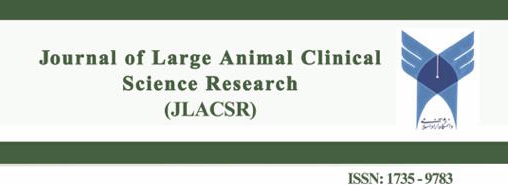Isolation of Esherichia Coli O157H7 and identification their virulence factors in pets and their owners in Isfahan city
Subject Areas : Journal of Veterinary Clinical and Laboratory Research(JLACSR)Ali Sharifzadeh 1 * , farnaz soltani 2
1 - Department of Microbiology, Faculty of Veterinary Medicine, Shahrekord Branch, Islamic Azad University, Shahrekord, I.R. Iran.
2 - Graduate of Veterinary medicine, Faculty of Veterinary Medicine , , Shahrekord Branch, Islamic Azad University, Shahrekord, I.R. Iran.
Keywords: O157H7, , , , , dog, , , , , cat, , , , , human,
Abstract :
Escherichia coli O157:H7 is one of the intestinal pathogens and Zoonotic diseases between humans and pets. The carrier pets are the source of infection for humans. This study was conducted with the aim of determining the frequency of Escherichia coli O157:H7 contamination in pets and their owners in Isfahan city. For this purpose, in the summer of 1400, fecal samples were taken from 115 samples. The relationship between Risk factors such as age, gender, race, diarrhea and the frequency of contamination were investigated. Isolated Escherichia coli confirmed by culture and biochemical test. O157:H7 serotypes on culture media and fecal swabs was detected by PCR. The Shiga toxin 1 and 2 genes were analyzed by multiplex polymerase chain reaction The results in the present study indicated that E.Coli O157:H7 were isolated from 44% of dogs,8% of cats,8% dog owners and 8% cat owners . No significant relationship was found between age, gender, race. However, a significant relationship was found between the incidence of diarrhea with infection. According to the results of molecular analysis of pet samples, were identified Stx1 gene in 44% samples and and Stx2 gene in 28% samples. Also were identified Stx1 gene In 20% samples and Stx2 gene in 16% samples in human samples. These results have demonstrated the role of dogs cats in spread and transmit of pathogenic Escherichia coli O157H7 to humans. Therefore, Dogs and cats can serve as reservoirs for these pathogenic dangerous bacteria.

